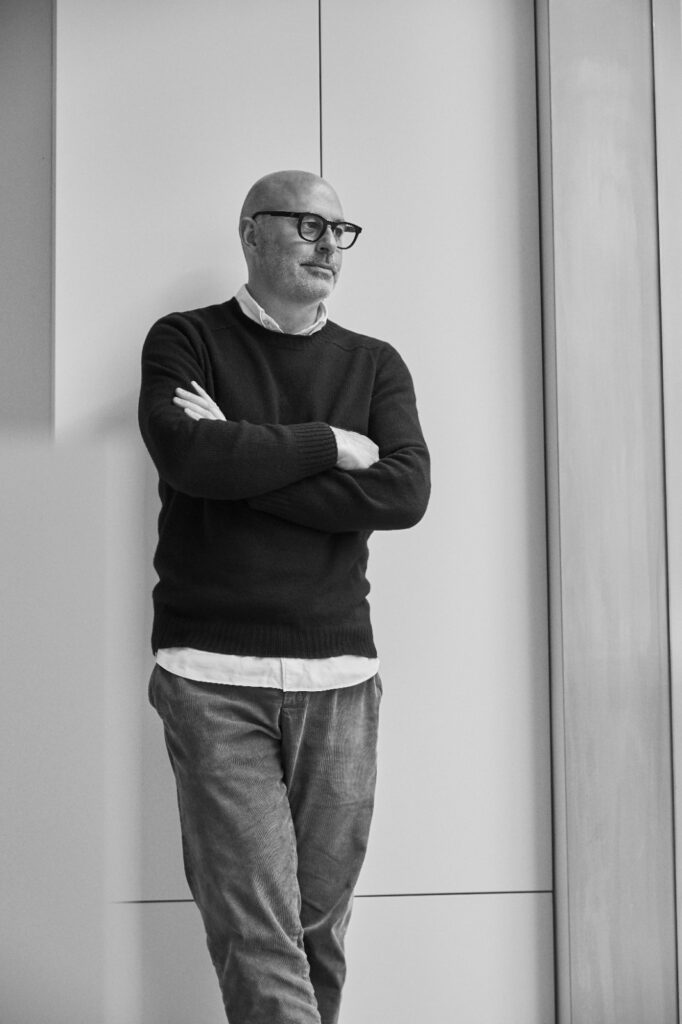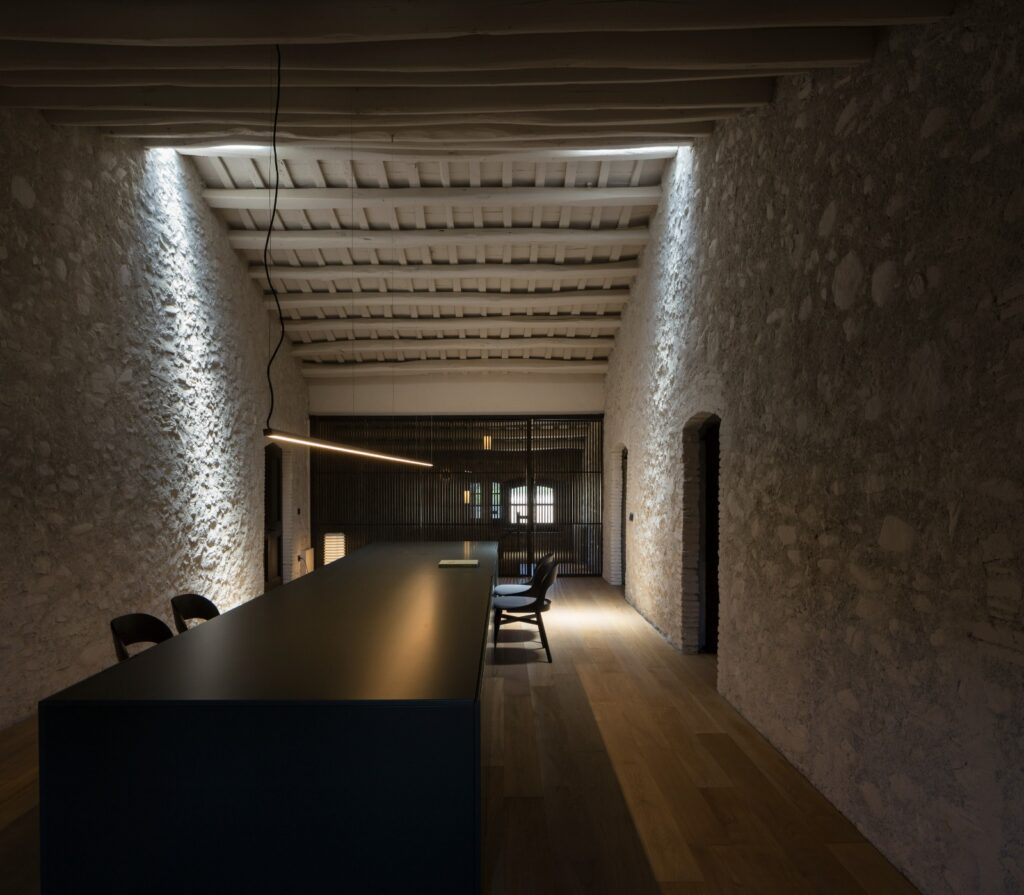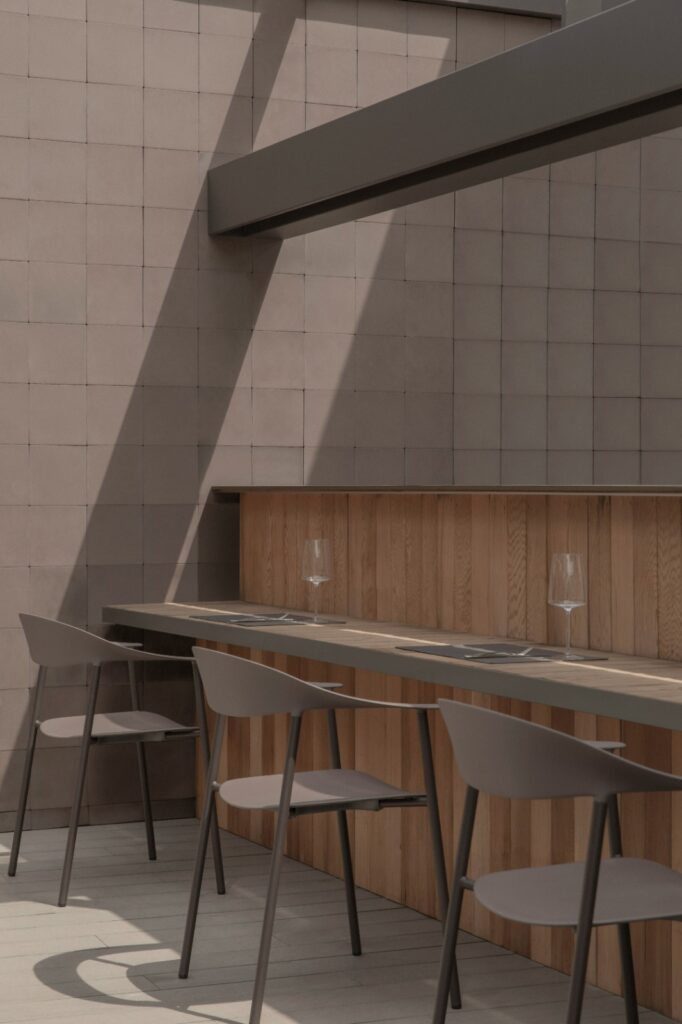In 1994, Francesc Rifé founded the multidisciplinary studio that bears his name, in which he produces orderly, balanced and understated work. Rifé stands out for his minimalist projects, both small and large, and has won multiple international awards including Contract World, Red Dot, ICFF Editors, HiP in Chicago, FAD and several ASCER awards.

Currently, Francesc Rifé Studios have a team of professionals able to cover national and international projects, related to interior design, industrial design, architecture, concept creation, installations, graphics and art direction.
In The Decorative Surfaces, we review his career, his vision and his way of understanding architecture and interior design.
You are associated with a simple, orderly, balanced and understated style, but… What do you consider to be the essence of your projects?
Precisely the calm that order provides, which distances us from chaos and the superfluous. Just as I believe in simplicity to solve the most complex problems, I believe in order to get to the heart of projects.
You said, ‘What defines us as a studio is order’. What does this concept mean to you?
It’s a concept that has been with me since childhood, I would say that it helps me to navigate spaces of unlimited ideas.
Where does an internationally renowned designer and interior designer get their inspiration?

At the beginning, it was from the great minimalist architects and now it’s mostly the emotion inherent to art. In the design process, the search for that emotion is more important to me than the practical aspects, which of course are also important.
What materials do you usually use in your projects?
Normally we go for natural materials, which we know age well, but for larger projects I don’t exclude new synthetic materials that provide durability in case of higher foot traffic. But for me, it’s essential to use few ingredients.
We know that Japanese culture is a strong inspiration for your projects. How does this influence materialise when creating a space?
Japanese logic is always profound. I worked there for a long time and I understood very quickly that for them the work of an architect or a designer is never trivial, they are well aware that the relationship between people and spaces or objects is important. In the studio, we strive for our clients to understand design in this way, not only as an aesthetic or decorative affair, but as a transcendental concept. After all, spaces define the way we live.
What kind of construction systems do you use at Francesc Rifé Studio?
As our designs are visually simple, we place a strong focus on construction details. I remember reading a book by Kengo Kuma, one of my greatest role models, in which he defended the idea of learning from craftsmen how to deal with details. As a carpenter’s son, this is something I have always pursued.
For years you have dedicated yourself to teaching, what advice would you give to a newcomer to the world of interior design and design?
More than ever, they must be creative. AI is going to hit the sector and we will have to adapt to it. It certainly takes a lot of passion to survive in a profession like this.
Your professional career has been recognised with numerous design awards such as the Contract World Awards, the Red Dot or ICFF Editors Awards, among others. What would you say is the secret of your success?
The timing was important. I always say that now it’s much harder to find a place in our world because there are so many more of us. But I suppose that the fact that we continue to work as well as before is because we have always wanted to go further, to evolve, without losing the ingredients that have built us: simplicity, good detail, emotion.
We have been able to admire one of your projects nearby, the restaurant Mimar. What aspects would you highlight about it?

It’s a restaurant with a prime location on Patacona beach where we basically help to bring order and make the most of the space. ‘Mimar’ means to treat someone or something with special care and attention.
Our design, together with its gastronomy, aim to achieve just that.
I would highlight the order and relationship with the sea provided by the lattice. It’s an element that I like to use in projects because it solves problems for me, such as too much sun, but it also connects me emotionally to the spaces or to nature itself. In addition, the light and shadows that it produces create wonderful dances on the surfaces.
What led you to publish your first book ‘Interior Industrial Design’?
Loft Publications contacted us in 2011 to encourage us to talk about our work in what would be only the first of four monographs (available on our new online shop www.rihouse.shop). I think these kinds of publications provide a slower approach to our work, they are better at delving into who we are and what we do.
What interior design projects would you like to work on in the near future?
We are immersed in projects that I had already dreamed of: cabins in Mexico, wineries in La Rioja and Valencia, a 12th century castle in Lleida… The future is far away, so I prefer to concentrate on what we are doing now.
Could you tell us about the team that makes up your studio and how you work?
Many specialities converge in the studio (industrial designers, interior designers, architects, renderers, journalists…) and it’s exactly this that allows us to get down to the nitty-gritty of things. In design, as in life, everything improves through collaboration.
During its long career in the sector, Francesc Rifé Studios has won several design awards such as the Contract World Awards, the Red Dot, ICFF Editors Awards, the HIP Award in Chicago, the FAD award and several ASCER awards.
